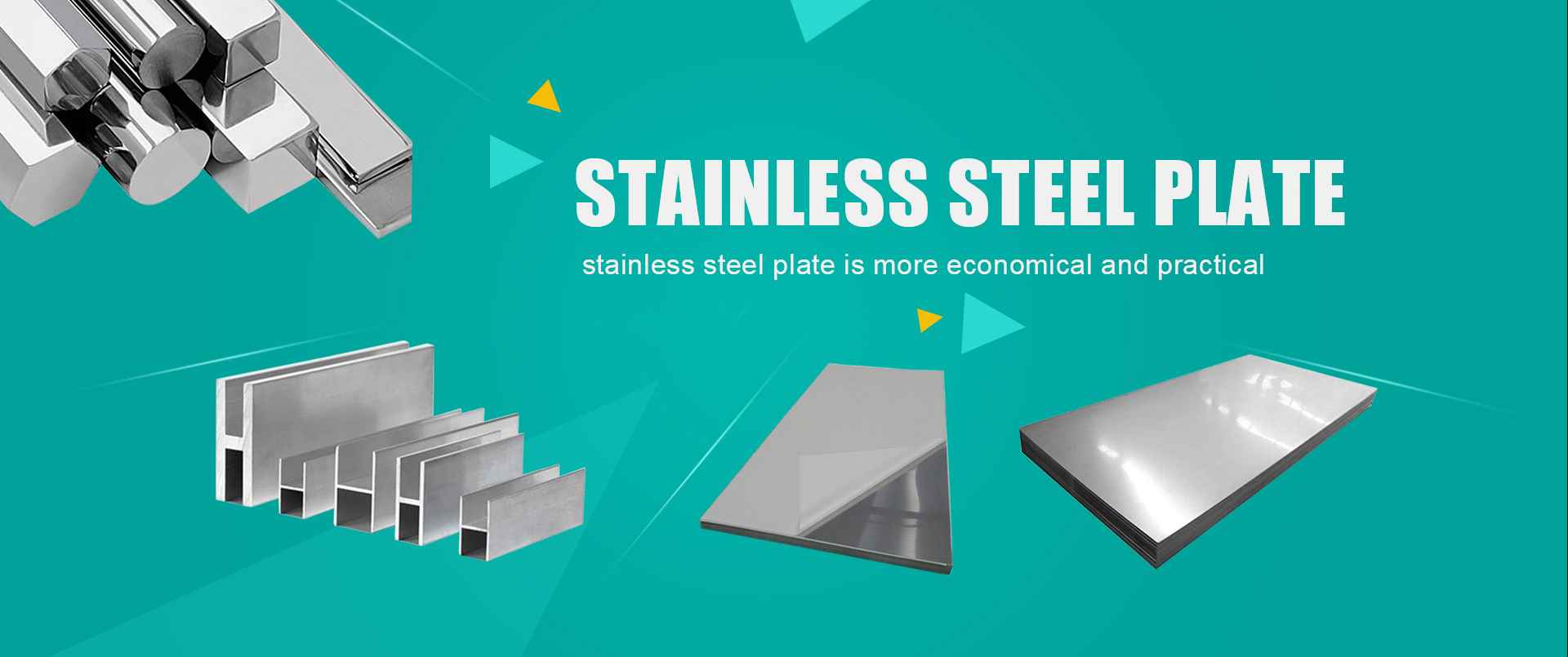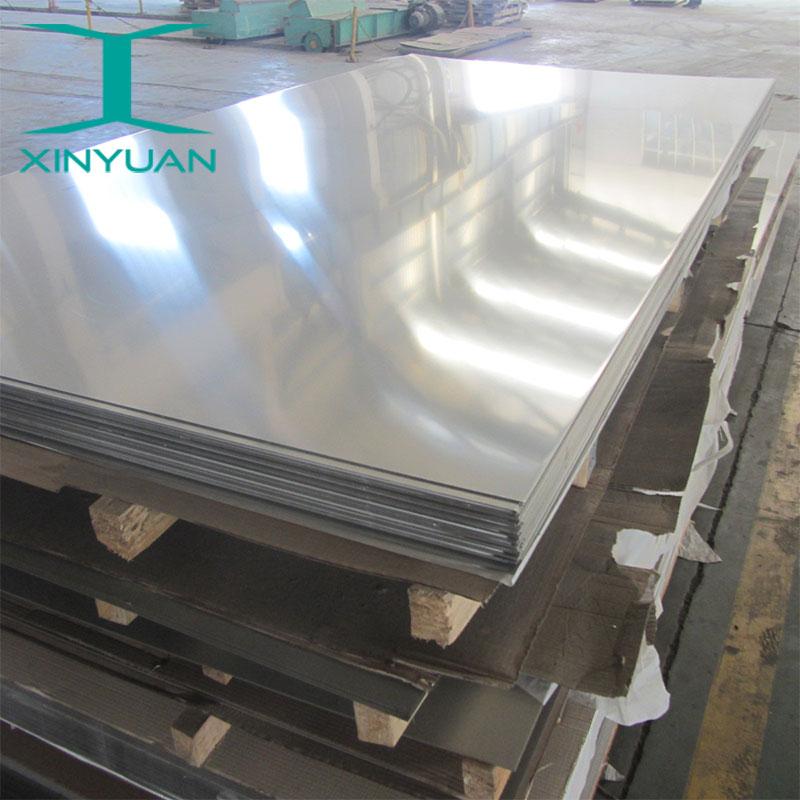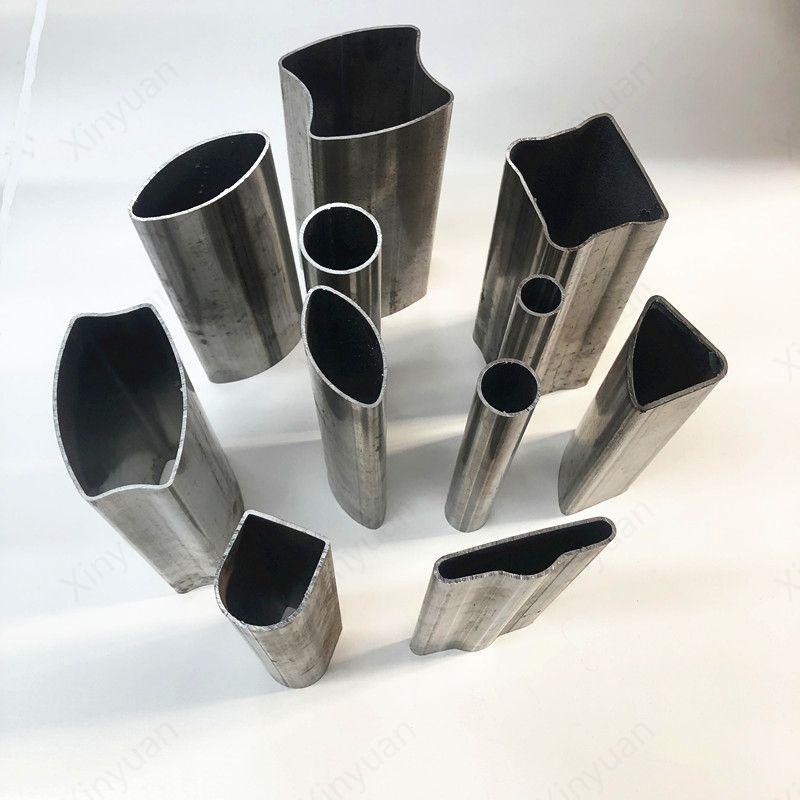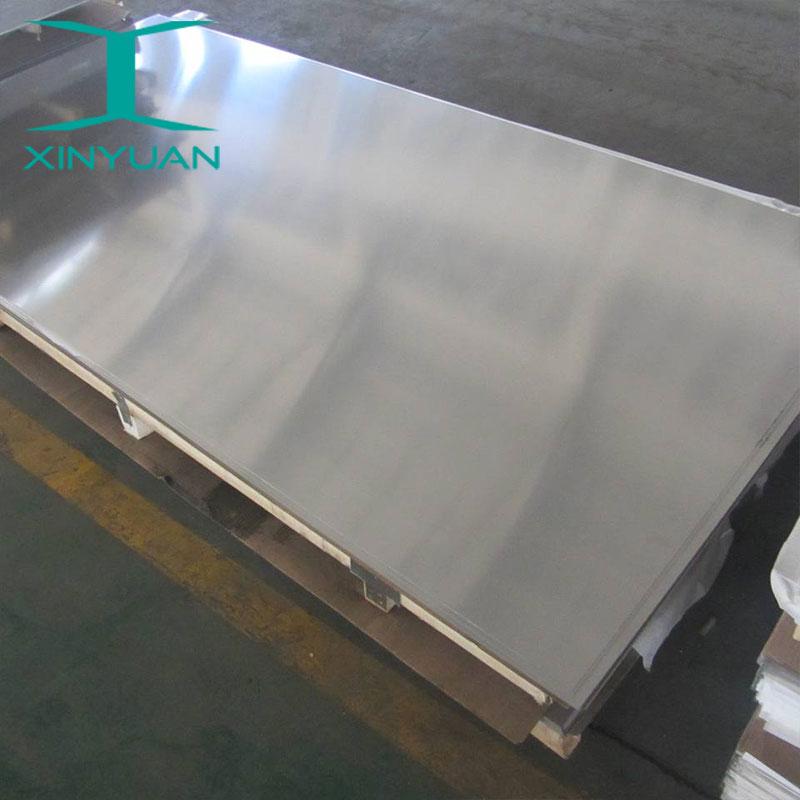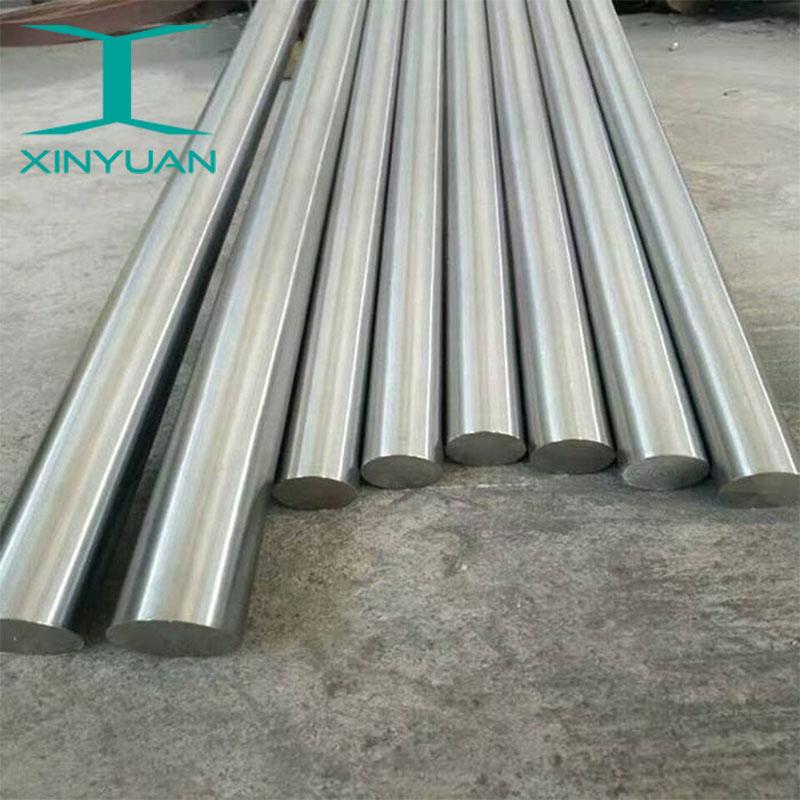The chemical composition of Monel400 alloy is mainly composed of 30%Cu and 65%Ni plus a small amount of Fe(1%-2%). The structure is typical monophasic austenite.
Contact Now
Class: E316HTX-XAWS: A5.22Conforms to Certification: AWS A5.22 ASME SFA A5.22Weld Process: Gas Metal ArcAWS Chemical Composition RequirementsC = 0.04 – 0.08S = 0.03 maxMn = 0.5 – 2.5Cr = 17.0 – 20.0Si = 1.0 maxNi = 11.0 – 14.0P = 0.04 maxMo = 2.0 – 3.0Cu = 0.75 maxApplicationElectrodes of this classification usually are used for welding similar alloys.
Contact Now
Hastelloy C-4 alloy is an austenitic low-carbon nickel-molybdenum-chromium alloy. The main difference between Nicrofer 6616 hMo and other early-developed alloys of similar chemical composition is the low carbon, silicon, iron, and tungsten content. Such a chemical composition makes it exhibit excellent stability at 650-1040°C, improves the ability to resist intergranular corrosion, and can avoid edge line corrosion sensitivity and weld heat-affected zone corrosion under appropriate manufacturing conditions.
Contact Now
Copper Nickel Alloy Strip CoilCompany ProfileSince its establishment Tianjin Xinyuan Stainless Steel Co., Ltd. has been steadily seeking progress with the care and support of colleagues and customers from all walks of life, and has developed into a comprehensive enterprise integrating stainless steel material processing and sales agents.Main materials: 201, 301, 304 (0Cr18Ni9), 304L (00Cr19Ni10), 321 (1Cr18Ni9Ti), 316 (0Cr17Ni12Mo2), 316L (00Cr17Ni14Mo2), 309S (0Cr23Ni13), 310S (0Cr25Ni20), 904L (00Cr20Ni25Mo4.5Gu) 316 , 317L, 317H, 304H, (SUS304, 321, 316, 310S, etc.).
Contact Now
According to the main chemical composition is divided into chromium stainless steel, chromium nickel stainless steel and chromium manganese nitrogen stainless steel; Can also be divided into acid resistant stainless steel and heat resistant stainless steel with performance characteristics; It is usually classified by metallographic structure.
Contact Now
202 stainless steel is one of the 200 series of stainless steel, gb model is 1Cr18Mn8Ni5N. 200 series stainless steel belongs to low nickel high manganese stainless steel, nickel content, manganese content of about 8%, is a section of nickel stainless steel.Chemical composition/%BrandCSiMnPSNiCrMoCuNother202≤0.15≤1.0≤7.5~10.0≤0.060≤0.034.00~6.0017.0~19.0----≤0.25BrandH treatmenteatThe yield strengthMpaTensile strengthMpaModulus of elasticity psiHBSHRBHV2021010~1120Fast cooling≥275≥520≥400000≤207≤95≤218Packaging & Shipping
Contact Now
Chemical composition of Incoloy926 nickel base alloyThe content of Cr in nickel-based alloys is usually 14.0-18.0% and the content of nickel is 24.0-26.0%.
Contact Now
Hastelloy C22 Nickel Chromium Plate SheetApplication:Hastelloy C-22 alloys are used in a wide range of chemical and petrochemical programs, which includes in additives and catalytic structures that come into contact with chloride-containing organics.This material is specially suitable to be used in high temperature, inorganic and organic acids combined with impurities (together with formic acid and acetic acid), and seawater corrosive environments.Hastelloy C22 Nickel Chromium Plate Sheet Chemical composition: Alloy % Ni Cr Mo Fe W Co C M
Contact Now
The Incoloy 800HT has further modified the combined titanium and aluminum levels (.85-1.20%) to ensure optimal high-temperature performance. The nickel alloy is dual certified (800H/HT) to combine the characteristics of both forms.
Contact Now
Inconel 625 tubeInconel 625 tube is a nickel-chromium-molybdenum stable answer reinforced alloy with a nominal chemical composition of 61% nickel, 22% chromium, and 9% molybdenum. Inconel 625 tube is regularly referred to through the tradename Inconel 625 and the everyday designation UNS N06625.
Contact Now
Alloys Incoloy 800H and Incoloy 800HT are iron-nickel-chromium solid solution strengthened alloys with a nominal chemical composition of 42% iron, 34% nickel, and 22% chromium. These two grades are variations of the base grade 800 and are referred to by the tradenames Incoloy 800H and Incoloy 800HT and the universal designation UNS N08810 and N08811, respectively.
Contact Now
Alloy 400 from NeoNickel has superb corrosion resistance, particularly in neutral and alkaline salts. It is also one of a limited number of alloys that can be used in conjunction with hydrofluoric acid and fluorine. With high nickel content, this alloy is immune to chloride-induced stress corrosion cracking.
Contact Now
Alloy B-2 is a nickel-molybdenum alloy with significant resistance to reducing environments, such as hydrogen chloride gas and sulphuric, acetic and phosphoric acids. Hastelloy® B-2 provides resistance to pure sulphuric acid and a number of non-oxidizing acids. The alloy should not be used in oxidizing media or where oxidizing contaminants are available in reducing media.
Contact Now
Alloy K-500 (UNS N05500) is a nickel-copper alloy.
Contact Now
SAF 2507 offers high compressive strength, impact strength, low coefficient of thermal expansion and high thermal conductivity.These characteristics are applicable to many structural and mechanical components.SAF 2507 has high impact strength and is not suitable for prolonged exposure to temperatures higher than 570°F, which may reduce toughness.2507 stainless steel composition content.GradeCMnSiPSCrMoNiN2507Min.Max.≤0.03≤1.2≤0.80≤0.035≤0.0224-263-56-80.24-0.32Chemical CompositionENASTM/UNSCNCrNiMoCOMPOMENT11.43013040.0418.18.321.4307304L0.0218.18.331.45413210.0417.39.1Ti0.2441.45503470.0517.5
Contact Now
Nickel Alloy Incoloy 800HT PipeIncoloy 800 HT is composed of more aluminum and titanium. This gives 800 HT even greater resistance to high temperatures. Incoloy 800 HT is recommended for temperatures exceeding 1100° F, often in instances where stainless steels are subject to crack and creep. The Incoloy alloys are commonly used in high temperature environments, such as industrial furnaces, chemical and nuclear vessels, and heat-treating equipment.
Contact Now
Alloy 718 (UNS N07718) is a high-strength, nickel-based superalloy made for long-term use in temperatures ranging from cryogenic up to 1200°F.
Contact Now
GH3044 is a solid solution strengthened nickel-based anti-oxidant alloy with high plasticity and moderate thermal strength under 900℃, and has excellent oxidation resistance and good stamping and welding process performance. It is suitable for manufacturing the main combustion chamber and afterburner parts, heat shield and guide blade of aviation engines working under 900℃ for a long time.
Contact Now
718 Nickel-based alloyProduct description718 Nickel-based alloy is specifically γ '[ Ni3(Al, Ti, Nb)] Nickel based high temperature alloys with getting older reinforcement have proper corrosion resistance and oxidation performance beneath 980 °C, excessive strength below 800 °C, and proper rest resistance underneath 540 °C.
Contact Now
Hastelloy C-22 is a versatile nickel-chromium-molybdenum alloy with better overall corrosion resistance than other Ni-Cr-Mo alloys available today, including hastelloy C-276, C-4, and A625. Alloy C-22 has outstanding resistance to pitting, crevice corrosion and stress-corrosion cracking. It has excellent resistance to oxidizing aqueous media including acids with oxidizing agents, wet chlorine and mixtures containing nitric acid or oxidizing acids with chlorine ions.
Contact Now
This alloy has the following properties.1. High resistance to pitting and crevice corrosion in halide media and acidic media containing H2S2. Effective resistance to chloride ion stress corrosion cracking in practical applications3. Excellent corrosion resistance to all kinds of corrosion in the usual oxidizing and reducing environment4. Mechanical properties are improved compared to Cronifer 1925 LC-Alloy 904 L5.
Contact Now
Alloy Inconel 625 is a low-carbon nickel-chromium-molybdenum alloy with excellent breadability to various corrosive media, non-magnetic; good strength, toughness and excellent fatigue resistance in environments ranging from low temperatures to 1093°C (2000°F), thanks to the low carbon content and solid solution treatmentTypeNickel Alloy Sheet/PlateThickness0.8-36mmLength3000mm, 5800mm, 6000mm,etcWidth1000mm,1500mm,2000mm,etcStandardASTM,AISI,JIS,DIN,ENApplicationConstruction,Ship,Boiler,Machinery,etcCertificationISO,SGS,TUVTechniqueCold Rolled/Hot RolledEdgeMill Edge/ Silt EdgeGradeHastelloy:
Contact Now
GH3128(GH128) Application field· Aero engine combustion chamber flame cylinder, afterburner shell and regulating plate· Structural components of gas turbine combustion chamber· Turbine engine combustion chamber components· Afterburner componentsGH4169 Application field· Main combustion chamber and afterburner of aviation engine· Welded structural parts of aeroengine· Engine mounting edge and conduit· Guide blade partsTypeNickel Alloy Sheet/PlateThickness0.8-36mmLength3000mm, 5800mm, 6000mm,etcWidth1000mm,1500mm,2000mm,etcStandardASTM,AISI,JIS,DIN,ENApplicationConstruction,Ship,Boiler,Machinery
Contact Now
